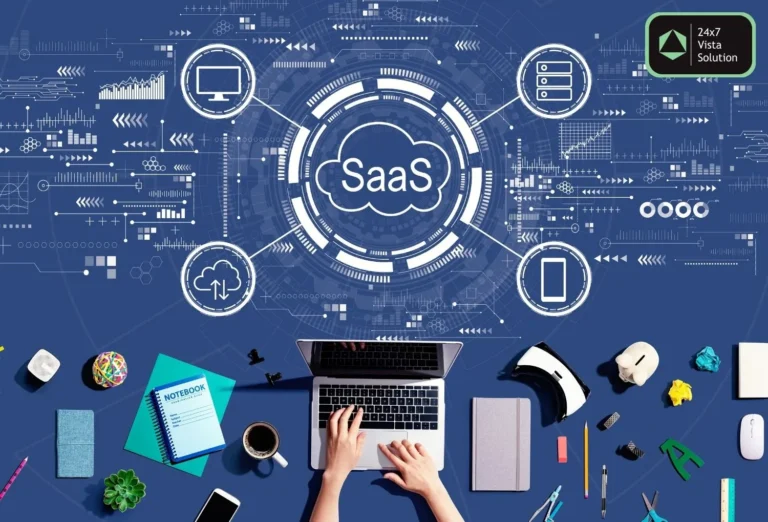Attention all business owners and HR experts! Are you still having trouble preparing the payroll using spreadsheets and manual calculations? Then it’s time to change. In the modern world of high speed, manual payroll is not an option at all. It is rather a necessary change that will help you develop the business and make the employees satisfied. This guide will cover all the details you ought to know about transitioning to automated payroll in 2025. We will look at the fundamentals, the benefits, highlights, a road map implementation strategy, common concerns, the top 10 concerns, and even some Frequently Asked Questions. It will help you understand how worthwhile it is to automate payroll and why it will make a difference in your operations. Now, that being said, let us jump in!
What Is Automated Payroll and Why It’s Crucial Now
So, what exactly is automated payroll? Payroll automation is the term used to describe the utilization of special software and technologies. It helps improve efficiency in terms of payroll and require minimal human intervention, as well. It reduces the amount of manual work involved.
Why is it so important now in 2025? The world of business is fast changing. As more people work from home, global teams have become standard procedure. AI is changing many fields, and the old way of organizing paychecks by hand can’t keep up. Payroll trends reveal that the use of AI to automate the process is enormous. Not only will this accelerate payroll processing, but it will also outsource difficult compliance rules, such as changing tax legislation. And besides, due to labor shortages and real-time-driven insights, companies that hold on to traditional models are bound to fall behind. Payroll automation is accurate, time-saving, and allows scaling without headaches. Put simply, it is no longer a question of whether to automate, but when you can begin to do it.
Top Benefits of Automating Payroll
Switching to an automated system brings a ton of advantages that go beyond just convenience. Let’s break them down.
Efficiency
Payroll activities, including report preparation and updating records, are important activities to businesses, yet can take up a lot of time, particularly in smaller firms. The time taken to manually enter data to use timekeeping could be utilized better in recruitment or during onboarding. The adoption of automated payroll software can help HR and finance personnel focus their efforts on more substantive work. Specialist payroll software can handle the bookkeeping requirements. This shift increases productivity.
Cost Savings
Payroll automation is one of the ways of accelerating the payroll processing cycle. This enables the employees who participate in the payroll process, such as those who review it before its submission, to move quickly to other activities. This could enable workers to accomplish more.
Accuracy & Error Reduction
There is an element of being human, and this gives rise to making mistakes, even for the most committed employee. A mistake in the complex calculation may bring a lot of additional work and, even, delays in making payments, which inflict even more risks of lawsuits upon the companies. Automated payroll can truly help reduce mistakes made by humans. Allowing the machines to perform complicated calculations makes the process easier, and there is an improvement in the possibility of making costly mistakes. This automation becomes more efficient, and it assists in ensuring that payroll is executed at the right time.
Compliance with Tax Laws
Correcting payroll calculation errors can take a lot of time and may lead to significant payroll compliance issues. For instance, incorrect withholding amounts or late filings may lead to penalties from the IRS.
Automated payroll systems reduce errors in payroll calculations. Furthermore, it can also handle the filing and deposit process for your company.
Employee Self-Service
Employees do not have to contact any member of the payroll department to get information; with payroll automation, the information is readily accessible. This saves time for both the employees and the payroll team, and the latter can focus more on productive duties.
Real-Time Reporting & Financial Planning
Automated payroll systems are excellent in managing a huge number of employees and payroll information. They can easily produce comprehensive reports and use much less time than an employee would for the same task.
It will easily compile such data in a matter of seconds through a payroll tool like Rippling. Conversely, it might take days or even weeks to compile and collate the same data points by involving several people in various departments.
Security & Audit Readiness
Payroll processing involves handling sensitive information of employees such as Social Security numbers, date of birth, and home address. Manual systems and more so the use of printed documents have no such required security features, ensuring that the information is confidential.
Security features have also been improved in many payroll automation software products, whereby employee information can be encrypted.
Why Cloud-Based Payroll Is the Future
The future of the cloud payroll solution is bright, with the charge of state-of-the-art technology! Predictive analytics will aid in the businesses’ predicting expenses, whereas mobile-first systems will support remote workers. Real-time processing of the payroll implies immediate pay, and AI will automate complicated activities and raise precision. Better employee self-service tools will allow the employees to have access to their pay and benefits. Improved security measures and automated compliance updates hold the promise of improving the payroll experience of all, being more efficient, promising improved security, and being more user-friendly!
Essential Features to Look For in Payroll Automation
Not every system is made alike and therefore give more consideration to the following musts when shopping for one.
Seamless Payroll Integration with HR, Accounting, and Time Tracking Systems
It connects with your accounting software to give you real-time insights into payroll costs and makes reconciliation easier.
There must be Support for Direct Deposit to Optimize Employee Payment Processes
Enables employees to be paid through direct-deposit or check printed electronically and even split deposits across accounts.
Self-Service Portals Empowering Employees to Manage Their Own Data
Self-service portals offer staff the ability to view pay stubs, update personal details, obtain access to tax documents and modify the direct deposit settings without assistance of the HR department.
Compliance Tools for Deductions, Tax Filing, and Audit Trails
Flags possible compliance matters, monitors the changes in tax law, and provides in-depth reports to keep you out in front of audits and regulations.
Step-by-Step Guide to Automate Payroll
Ready to make the move? This is a simple strategy of automating payroll.
1. Audit Your Current Process – Identify Pain Points Like Labor Hours, Errors, Compliance Issues
Start with an examination of your current arrangement Record the amount of time consumed by payroll, record frequent inaccuracies and identify compliance risks. This baseline helps justify the switch and highlights what needs fixing.
2. Evaluate Providers- Why is it important to choose the right one?
It is very important to choose the right payroll program. It needs to be built on clear requirements. Take a look at how experienced the team is, how much they expect to grow, and how complicated the payroll is, etc. Make sure the software you choose will seamlessly integrate with your current technology environment and is easy to use. Also, calculate expenses so that the provider does not cost more than what is within your budget, but still provides the necessary features, such as payroll reporting/calculations. Providers do not always provide equal support and flexibility, so it is important to conduct full research into this.
3. Get your data ready
Collect necessary data like subordinate information, wage records, tax codes, and past payroll records. Then clean and validate this data to ensure the accuracy, check the similarity of formats, in particular concerning dates. Lastly, prepare the data to transfer it to the new payroll by formatting information according to the requirements of the systems. Make sure that the records have no empty fields. Also, back up the original information in case of information failure.
4. Pilot Phase – Start with a Small User Group to Test Workflows
It is always imperative to subject the new automated payroll system to effective testing to determine the accuracy and compliance with calculations and payroll deductions. This involves putting different scenarios to test, such as bonuses, overtime, and tax changes. As one more tool, it is possible to request a parallel run with a provider in order to make sure that the system properly draws data. All these steps can be vital in reassuring the new system to be reliable before it goes live.
5. Train Your Team & Communicate – Introduce Self-Service Features to Employees
Training of human resources will be used, and demonstrations will be provided. Good communication helps to get everyone on board and eases the transition.
6. Launch and Monitor Continuously – Use Real-Time Reporting for Feedback and Adjust
Go live, then use the built-in reports to monitor performance. After collecting the feedback, make modifications where necessary and maintain success.
Overcoming Common Payroll Automation Concerns
It’s normal to have hesitations. Everything has advantages and disadvantages. Let’s address what concerns showup while using automated payroll software.
Data Security
Payroll records are sensitive because they are personal in nature, and they include data such as Social Security numbers, addresses, salaries, and bank accounts. Payroll systems have been known to be targeted by malicious actors, especially through phishing emails, which are commonly heard to be associated with cyberattacks. One inadvertent action, like tapping on a malicious site, can lead to a breach of security in the company and also endanger the data of employees.
Failure to Retain Payment Records
It is important for businesses to keep payroll records in order to avoid paying fines and audit snags. The retention period differs, as the Department of Labor will require 2-3 years to keep some records, whereas the IRS will require 4 years to be kept, including employee taxes, files, and forms. A disorganized payroll system can lead to significant challenges. In particular, businesses that are required to utilize manual processing or a disorganized series of spreadsheets. In a bid to improve compliance and overall smoother operations, businesses must seek professional accountability regarding the detailed record retention advice. Be efficient and cut down on the headaches!
Errors Tracking Employee Work Hours and Overtime
Another major issue is poor payroll computations, which normally happens due to various systems employed to compute the working hours and overtime. Automated solutions allow more errors to be made when working manually, e.g., using spreadsheets or time cards. The most frequent causes of insecure time records include overtime recording mistakes, failure to record travel time, working during breaks, and off-hours activities like training. With small businesses, collection and confirmation of hours worked usually proves difficult, and larger organizations have more complexities in that they have more locations and different pay structures.
Legal Compliance
Payroll teams need to have a strong understanding of the tax and labor regulations specific to their country. These include knowing about overtime compensation, when employees are supposed to be compensated, statutory deductions to be made by the government, and regulations. According to a recent survey, 63 percent of persons surveyed cited compliance issues as their principal problem when it comes to managing the global payroll. These regulations are not the easiest to navigate for businesses, and failure to go through the regulations carefully may lead to a costly fine. Comprehending the idea of a job that is dependent upon place
FAQ Section (for PAA and Featured Snippets)
Q1. How much time can payroll automation save?
Automating payroll may free between 3 to 5 additional hours of labor that workers can use on other activities.
Q2. Is payroll automation worth the investment?
Automation reduces costs associated with the payroll and removes the need for subsequent payroll-related work by cutting down on manual work as well as payroll mistakes.
Q3. Can small businesses automate pay?
The process of paying bills can be automated, which saves up to 70% of the time that would have been spent doing it by hand.
Q4. How does automation affect payroll accuracy?
Automate payroll increases efficiency in the organizations through increased flow of work and reduced errors. Automated systems are accurate and time-saving, and also strategically minimize inefficiencies in payroll management.
Final Thoughts: Automate Payroll to Gain Strategic Focus
To sum it up, once you have mastered the move to automated payroll, you can free your time and energy back into the things that drive your company forward. You can move towards a more proactive strategy in the year 2025, having tools that do the hard work. Additionally, using automated payroll does not mean you have to rely solely on it. You always have to cross-verify the information it produces. So, automate your payroll system today and see the business operations soar higher. Your antiquated methods should not keep you stuck.




